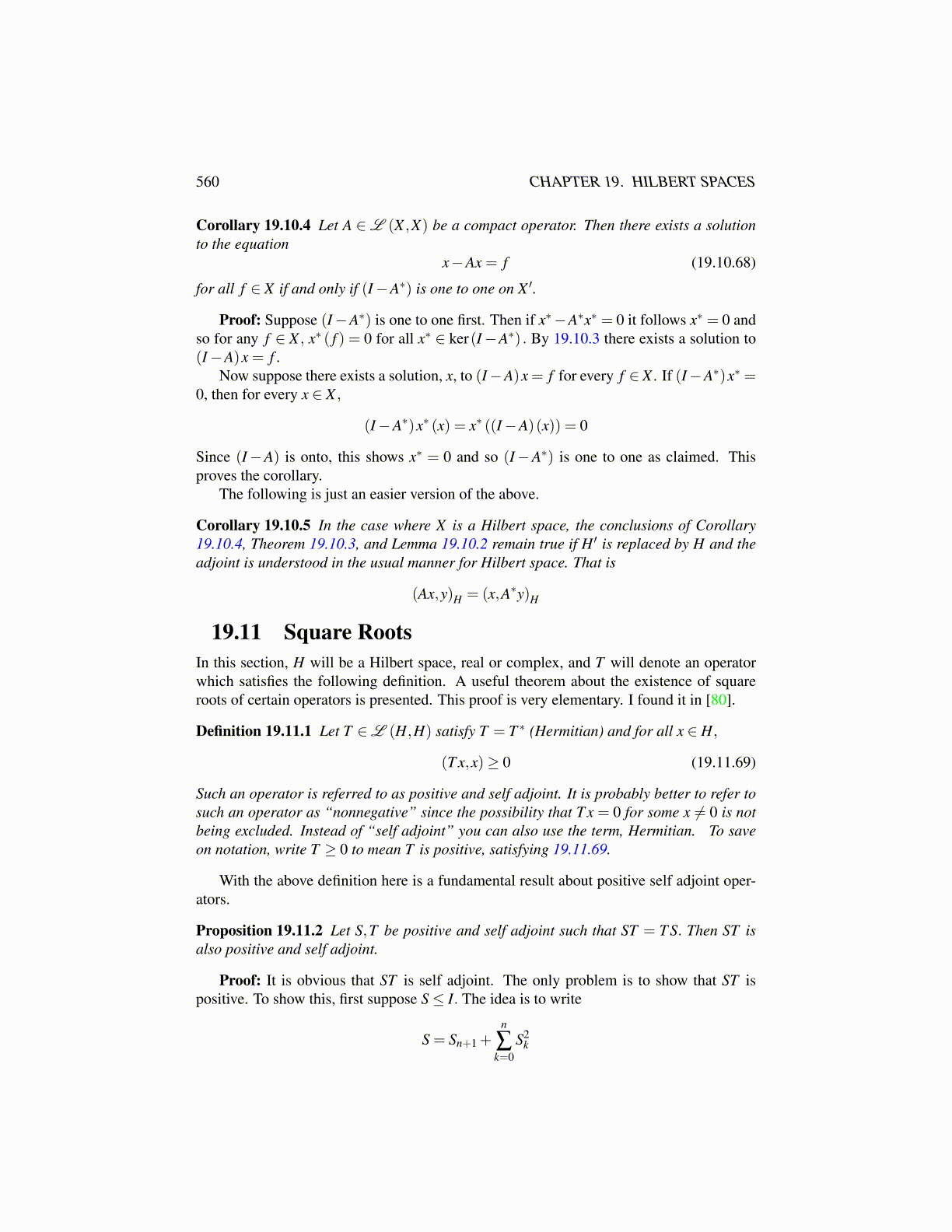
560 CHAPTER 19. HILBERT SPACES
Corollary 19.10.4 Let A ∈L (X ,X) be a compact operator. Then there exists a solutionto the equation
x−Ax = f (19.10.68)
for all f ∈ X if and only if (I−A∗) is one to one on X ′.
Proof: Suppose (I−A∗) is one to one first. Then if x∗−A∗x∗ = 0 it follows x∗ = 0 andso for any f ∈ X , x∗ ( f ) = 0 for all x∗ ∈ ker(I−A∗) . By 19.10.3 there exists a solution to(I−A)x = f .
Now suppose there exists a solution, x, to (I−A)x = f for every f ∈ X . If (I−A∗)x∗ =0, then for every x ∈ X ,
(I−A∗)x∗ (x) = x∗ ((I−A)(x)) = 0
Since (I−A) is onto, this shows x∗ = 0 and so (I−A∗) is one to one as claimed. Thisproves the corollary.
The following is just an easier version of the above.
Corollary 19.10.5 In the case where X is a Hilbert space, the conclusions of Corollary19.10.4, Theorem 19.10.3, and Lemma 19.10.2 remain true if H ′ is replaced by H and theadjoint is understood in the usual manner for Hilbert space. That is
(Ax,y)H = (x,A∗y)H
19.11 Square RootsIn this section, H will be a Hilbert space, real or complex, and T will denote an operatorwhich satisfies the following definition. A useful theorem about the existence of squareroots of certain operators is presented. This proof is very elementary. I found it in [80].
Definition 19.11.1 Let T ∈L (H,H) satisfy T = T ∗ (Hermitian) and for all x ∈ H,
(T x,x)≥ 0 (19.11.69)
Such an operator is referred to as positive and self adjoint. It is probably better to refer tosuch an operator as “nonnegative” since the possibility that T x = 0 for some x ̸= 0 is notbeing excluded. Instead of “self adjoint” you can also use the term, Hermitian. To saveon notation, write T ≥ 0 to mean T is positive, satisfying 19.11.69.
With the above definition here is a fundamental result about positive self adjoint oper-ators.
Proposition 19.11.2 Let S,T be positive and self adjoint such that ST = T S. Then ST isalso positive and self adjoint.
Proof: It is obvious that ST is self adjoint. The only problem is to show that ST ispositive. To show this, first suppose S≤ I. The idea is to write
S = Sn+1 +n
∑k=0
S2k